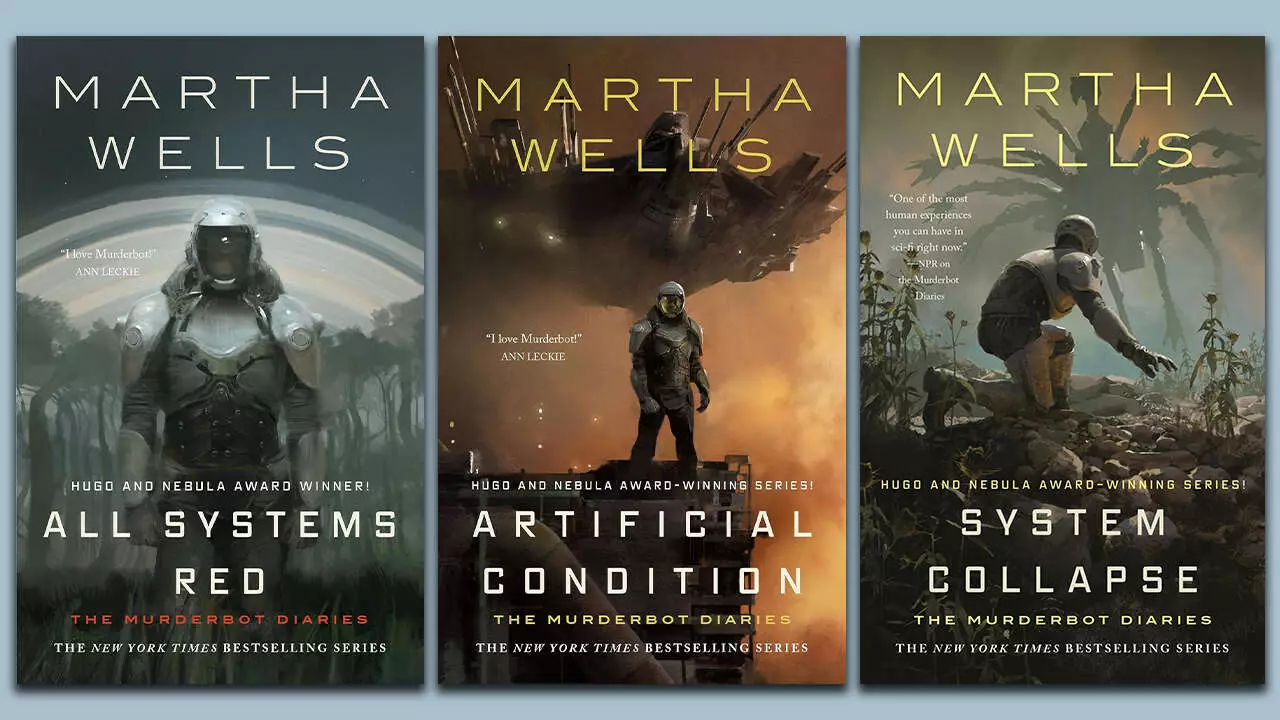The science fiction landscape has undergone a profound transformation in recent years, as creators breathe life into narratives that fuse technology with deeply human experiences. The new Apple TV+ series “Murderbot,” which recently premiered, exemplifies this exceptional blending of genres. Adapted from Martha Wells’ acclaimed “The Murderbot Diaries,” the series effectively elevates expectations for sci-fi storytelling today. It’s important not only to acknowledge the series as an adaptation but also to appreciate how it manages to present complex themes of self-awareness and existential crisis through the lens of a security cyborg.
This isn’t just another faceless mechanical character. Instead, the titular character, known as “Murderbot” (brought to life by actor Alexander Skarsgård), embodies the struggle of consciousness versus programming. Audiences are drawn into a world in which an artificial being grapples with the desire to break free from its externally imposed duties. The show stands out because it demystifies artificial intelligence, showing viewers a relatable, albeit conflicted inner life instead of a cold, calculating machine.
The Journey from Page to Screen
Wells’ original novella, “All Systems Red,” was well received upon its release in 2017, winning prestigious accolades like the Hugo and Nebula Awards. This speaks volumes about the quality of the narrative that Apple TV+ sought to adapt. However, the challenge of translating such nuanced characters and intricate themes to a visual medium can often lead to diminished storytelling. Yet, the transformation of Wells’ work into the series format appears to be a triumph, as early reviews maintain that the adaptation remains faithful to the source material’s essence, capturing its humor and emotional weight.
The show dares to tread where many sci-fi adaptations have faltered, emphasizing character development and relational dynamics over mere action. By showcasing the protagonist’s humorous desire to engage with human entertainment—such as binge-watching soap operas—viewers become invested in its internal conflicts. This creative choice effectively enables the audience to empathize with a non-human entity, thus fostering a richer storytelling experience.
A Wealth of Content and Options
For fans eagerly seeking the source material, the Murderbot series is available in various formats. The four-book collection offers a comprehensive introduction to the initial saga while remaining budget-friendly. At nearly half off, it provides a unique opportunity for newcomers to delve into this engaging universe without breaking the bank. With a mix of hardcover, digital, and audio formats, accessibility is a key highlight that allows readers to choose their preferred method of experiencing the stories.
The original six novellas, each a quick read, alongside the additional full-length novels, create a compelling package for fantasy and sci-fi enthusiasts. This expansive narrative universe allows for flexibility, inviting readers to explore the broader themes of governance, autonomy, and even the absurdities of life through the eyes of an unexpected hero.
The Audiobook Advantage
For those wanting to experience the series on-the-go, audiobooks offer an enticing alternative. With options like Audible’s Premium library and various subscription models, accessibility is further expanded. The unique format allows for an engaging way to consume the narrative while juggling everyday responsibilities. Furthermore, options to subscribe for a free trial enhance the likelihood that potential fans will give the series a chance.
Listening to the story unfold in an audiobook format can impart additional depth, as the nuances of performance by skilled narrators add layers to already compelling characters. The idea that this self-aware cyborg can be narrated in a way that draws listeners closer to its struggles is nothing short of ingenious.
Portraying the Cyborg Experience
Perhaps what makes “Murderbot” resonate so strongly with viewers is its examination of isolation and desire in an increasingly technology-driven world. The character’s quest for individuality amidst a framework of servitude isn’t only a reflection of robotic existence; it resonates with human feelings of confinement in societal roles. This parallel allows the audience to confront their own insecurities and aspirations, positioning “Murderbot” not just as entertainment, but as an exploration of consciousness in the age of technology.
The success of this series lies in its ability to challenge viewers to re-evaluate their understanding of artificialness. “Murderbot” leverages humor and relatable experiences, inviting discussion on the coexistence of humans and intelligent technology. Through its powerful storytelling and multifaceted characters, viewers and readers alike are ushered into a complex dialogue about what it means to be “alive.”


Leave a Reply